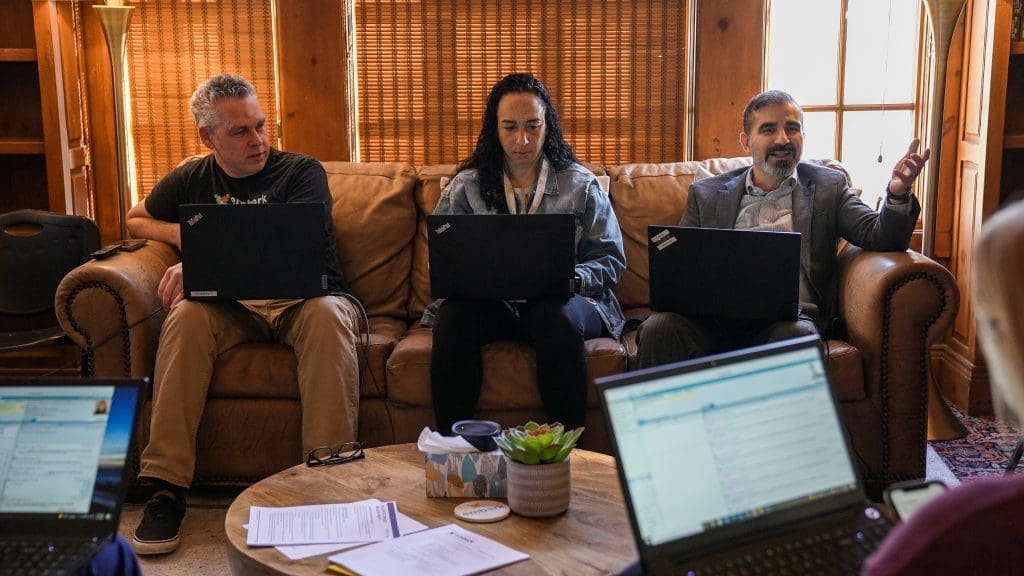For adolescents who need 24/7 care to address their mental health issues, a residential treatment program can be a critical part of the healing process. At the heart of these programs are therapists whose expertise, skills, and compassion make a significant impact on their patients.
What’s a typical day like for these therapists, how do they help the young people they serve, and what do they find rewarding about their jobs? Cameron Armstrong, a licensed clinical social worker and the assistant clinical director at Embark at Hobble Creek, an Embark Behavioral Health program in Utah for girls ages 12-17, shared some insights.
A Typical Day for a Residential Therapist
As soon as he arrives at 9 a.m., Armstrong meets with the team regarding their students. They discuss any safety issues of those under their care as well as progress that’s being made and upcoming discharges. Armstrong appreciates this interaction with other therapists because if he questions a case or experiences challenges, he can talk to his colleagues to get the support he needs. That support could include collaborating on treatment.
“As we brainstorm together about our cases, we may have ideas for a therapist about an approach, so we’ll set up a joint session to work with that student as a team,” he said.

Armstrong runs both individual and family sessions during the week. During those sessions, his main focus is to get to the root of the student’s issue, look at how the family unit is functioning and interacting, and ensure students and their families can communicate in a healthy way. With the typical student staying at a residential program for one to three months and then leaving to continue healing at home, this therapeutic approach is crucial.
“I want parents to leave with a knowledge of the issues, warning signs to look for, and skills to practice proactively,” Armstrong said. “Parents also need to know their main family dynamic issue that gets in the way. Parents and students need specifics about what’s going on and what to do about it.”
Armstrong and other therapists also run group therapy each week. During these sessions, students learn how to use dialectical behavior therapy and other skills in practical ways and can practice them with their peers and hear each other’s insights.
Armstrong interacts with students outside sessions as well. For example, he spends lunchtime at the tables where they eat to make small talk about topics such as music or how their day is going. Before he leaves at night, he hangs around in the community area to chat with them, which can help strengthen the therapeutic connection that’s so critical to the healing process at Hobble Creek.
The Importance of Self-Care and Honesty
With busy days that include intense focus on the well-being of others, Armstrong believes therapists must be able to take care of themselves too. He’s found ways to do just that. Embark at Hobble Creek has a wonderful view of the mountains, so he unwinds by sitting at his desk and taking a few deep breaths. He also takes time to play guitar in his office or talk to the chef as dinner is prepared.
Besides these practices, Armstrong is also honest with his students about how he’s doing to encourage them to give honest answers about their struggles.
Fulfillment From the Job
As the popular adage goes, the harder you work for something, the greater you’ll feel when you achieve it — and that’s true for residential therapists.
Throughout his career, including his time at Hobble Creek, Armstrong has helped over 150 students along on their journey to healing, including some with a history of multiple suicide attempts and cutting. He’s grateful to have played a role in them leaving their treatment programs healthier than when they arrived and to have received positive feedback as a result. For example, parents have emailed him messages of thanks that he’s printed out and saved — enough to fill several shoeboxes.
“For over 20 years, I’ve received letters about students getting their driver’s license, high school and college graduation announcements, and wedding announcements,” Armstrong said. “Sometimes, I get a random call even if I haven’t talked to a student for the past six years. I love catching up with them and hearing they’re doing well. It’s so rewarding knowing they’re in a more joyful place now.”
Get your free guide:
6 Tips and Tactics to Help Your Child and Family Thrive Mentally, Socially, and Emotionally
